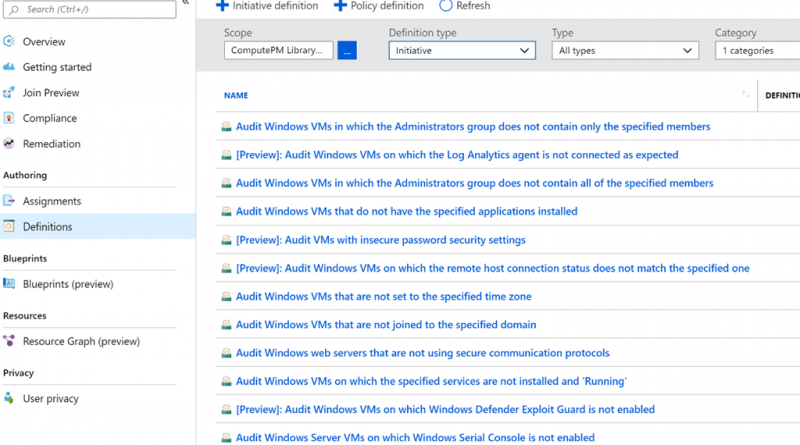Preview of custom content in Azure Policy guest configuration
Today we are announcing a preview of a new feature of Azure Policy. The guest configuration capability, which audits settings inside Linux and Windows virtual machines (VMs), is now ready for customers to author and publish custom content.
The guest configuration platform has been generally available for built-in content provided by Microsoft. Customers are using this platform to audit common scenarios such as who has access to their servers, what applications are installed, if certificates are up to date, and whether servers can connect to network locations.
Starting today, customers can use new tooling published to the PowerShell Gallery to author, test, and publish their own content packages both from their developer workstation and from CI/CD platforms such as Azure DevOps.
For example, if you are running an application on an Azure virtual machine that was developed by your organization, you can audit the configuration of that application in Azure and be notified when one of the VMs in your fleet is not compliant.
This is also an important milestone for compliance teams who need to audit configuration baselines. There is already a built-in policy to audit Windows machines using Microsoft’s recommended security configuration baseline. Custom content expands the scenario to content from a popular source of configuration details, group policy. There is tooling available to convert from group policy format to the desired state configuration syntax used by Azure Policy guest configuration. Group policy is a common format used by organizations that publish regulatory standards, and a popular tool for enterprise organizations to manage servers in private datacenters.
Finally, customers that are publishing custom content packages can include third party tooling. Many customers have existing tools used for performing audits of settings inside virtual machines before they are released to production. As an example, the gcInSpec module is published as an open source project with maintainers from Microsoft and Chef. Customers can include this module in their content package to audit Windows virtual machines using their existing investment in Chef InSpec.
For more information, and to get started using custom content in Azure Policy guest configuration see the documentation page ”How to create Guest Configuration policies.”
Source: Azure Blog Feed

